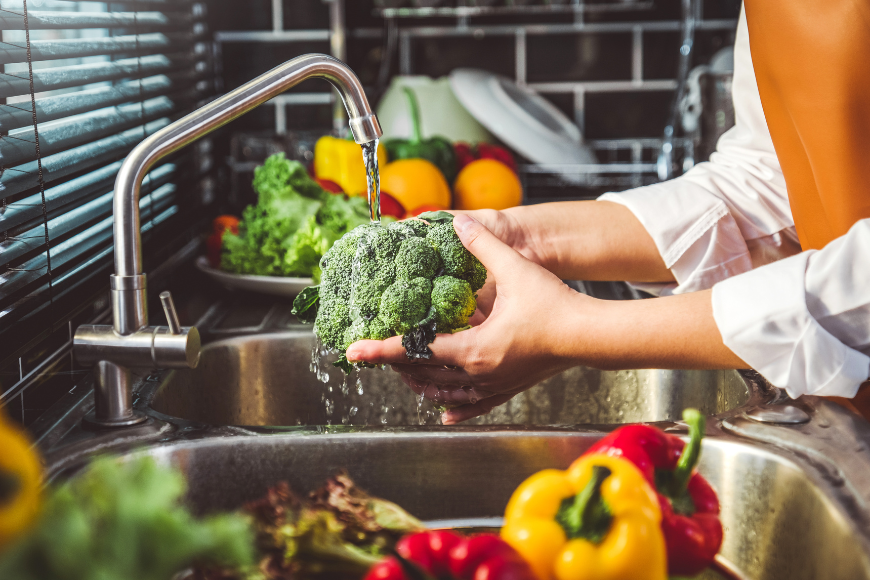The water bills in Qatar can be expensive so we have put together ways that you can reduce how much you use and then the cost too.
22 July 2013
| Last updated on 19 June 2017
We’ve seen on our information forum that some people have had some exceptionally high water bills recently, so let’s take a look at some steps you can take to save water and save some money!

Leaks
A major issue with soaring bills are leaks and it’s important to spot and stop one as soon as possible to prevent water wastage. Every property has a meter and it’s essential you keep an eye on this as you are billed as per the meter reading. If you suspect a leak and want to confirm it take the following steps:
Step 1: Turn all water- using appliances off so that no water is being used. This means turning off all water inside and outside the house including showers, sinks, washing machines and any appliance that uses water. If you have a sprinkler irrigation system, turn off the controller and manually shut off the valves to isolate the irrigation system.
Step 2: Go to the meter. If the actual meter dial is moving, water is running somewhere in your system and you have a leak. If the dial is not moving, note the position of the hand and wait 10 minutes. Check the meter again, if it has moved, you have a slow leak. If not, you do not have a leak.
Step 3: Locate the main shut-off valveto your home. This is usually located close to the meter box. Turn off the valve. Turn on a tap inside the house to test. If water still flows from the tap after several seconds, the shut off valve is not working. If no water flows through the tap, the shut off valve is working. Return to the meter.
Step 4: Check if the meter’s is moving. If the meter is still moving, water is flowing between the meter and the shut-off valve. That means you have a leak between the meter and the customer-side shut-off valve. If it is not moving, then you have a leak between the customer-side shut-off valve and possibly somewhere in the house. Check toilets, washing machines, taps, etc., for any leak.
Step 5: To check a toilet for a leak. Flush the toilet and while the reservoir is still filling, add 2 or 3 drops of food colouring to the water in the reservoir. Wait 15-30 minutes. If the water in the bowl changes colour, the flapper valve needs to be replaced.
Water Saving Tips
The Bathroom
-
Bathroom use accounts for about 75% of the water used inside the home.
-
Check regularly for any leaks in your toilet, taps and water hose bibs and fix them.
-
Install a low- flow showerhead.
-
Replace older, larger- use toilets with the newer higher efficiency toilets.
-
Take short showers and save the baths for special occasions. Water saved: 2 to 5 gallons per minute.
The Kitchen
-
About 8% of in- home water use takes place in the kitchen.
-
Don't rinse dishes before loading dishwasher.
-
Wash only full loads in the dishwasher. An efficient dishwasher usually uses much less water than washing dishes by hand.
-
Install a low- flow tap aerator, which can cut water use in half.
-
When buying a new dishwasher, consider purchasing a water-saving model. New models use up to 25% less water than older ones.
Around The House
-
Wash only full loads in the clothes washer. Washing small loads uses over twice as much water per kilo of laundry.
-
When buying a new clothes washer, consider purchasing a water-saving model.
Personal
-
Shorten your shower by a minute or two and you'll save up to 150 gallons per month.
-
When running a bath, plug the tub before turning the water on, then adjust the temperature as the tub fills up.
-
Designate one glass for your drinking water each day or refill a water bottle. This will cut down on the number of glasses to wash.
-
Avoid recreational water toys that require a constant flow of water.
-
Listen for dripping taps and running toilets. Fixing a leak can save 300 gallons a month or more.
-
Turn off the water while you wash your hair to save up to 150 gallons a month.
-
Turn off the water while you shave and save up to 300 gallons a month.
-
When you are washing your hands, don't let the water run while you lather.

Did you know?
In many households the largest water users are automated sprinkler and irrigation systems. These sprinkler systems can make up 60% or more of the water used in homes! When planning your garden really think about how much grass you can really afford to keep alive. Look at other options such as sand, rockeries, gravel, fake grass and buy plants that are suited to a desert environment to help cut water usage.
Here’s some more really quick outdoor water saving tips that can really make a difference…
-
Adjust sprinklers so only your lawn is watered and not the house, pavement, or street.
-
Water your lawn and garden in the morning or evening when temperatures are cooler to minimize evaporation.
-
Use a brush instead of a hose to clean your driveway and paths and save water every time.
-
Don't water your lawn on windy days when most of the water blows away or evaporates.
-
Learn how to shut off your automatic watering system in case it malfunctions or you get an unexpected rain.
-
Use sprinklers that deliver big drops of water close to the ground. Smaller water drops and mist often evaporate before they hit the ground.
-
Water plants only when necessary. More plants die from over-watering than from under-watering.
We do hope following these tips helps you to save some money as well as doing your bit for the environment!





.jpg?itok=4utim_xh)































.jpg?itok=OdfWVChW)
.png?itok=3d-9ov-m)




















































.jpg?itok=huYiXiog)

.jpg?itok=WvzOqcwJ)


.png?itok=6xLVeUta)













